#rememberthis
Before the war: Halina Birenbaum was born in Warsaw in September 1929. She was only 10 when the Nazis invaded.
During the Holocaust: In the Warsaw ghetto, her mother worked diligently to avoid deportation until 1943, after the Warsaw Ghetto Uprising destroyed the ghetto. She was sent to Majdanek, then Auschwitz, then Ravensbrück and finally, Neustadt-Glewe. Her mother was murdered in Majdanek, and her father and brother were murdered in Treblinka.
After the Holocaust: After liberation, she returned to Warsaw but emigrated to Israel in 1947. In 1967, she published her first book, entitled “Hope is the Last to Die.” In March 2001, Halina was awarded the Person of Reconciliation by the Polish Council of Christians and Jews.
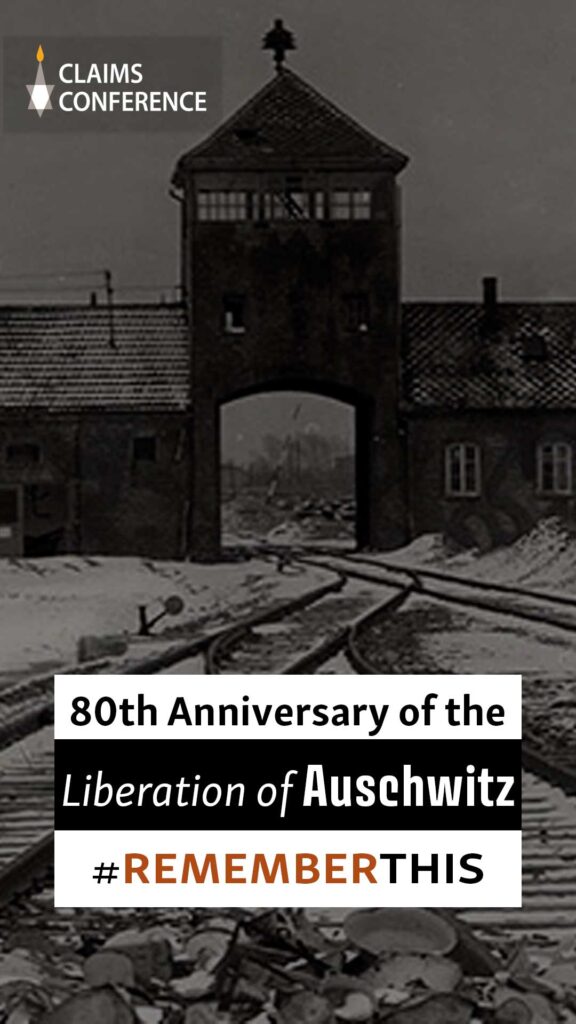
#rememberthis
Before the war: Hanna Sternlicht, née Neumannová was born in Holice, Czechoslovakia in 1930. She was an only child.
During the Holocaust:Hanna was 9 years old when the Nazis occupied Czechoslovakia. She was first interned at Theresienstadt in December 1942 with her parents. In October 1944, at 14 years old, she and her mother were deported to Auschwitz, where she told Mengele she was 17. Her father had been deported there the month prior. Hanna was selected for work and sent to the Freiberg labor camp in Saxony. With the camp’s evacuation, she was moved to Mauthausen, where she was liberated on May 5, 1944.
After the Holocaust: After the Holocaust, she returned home to try to find relatives. She then joined a youth movement and emigrated to Israel in March 1949. She then moved into Kibutz HaHotrim with her future husband. She moved to Kiryat Gat in 1962, where she now lives.
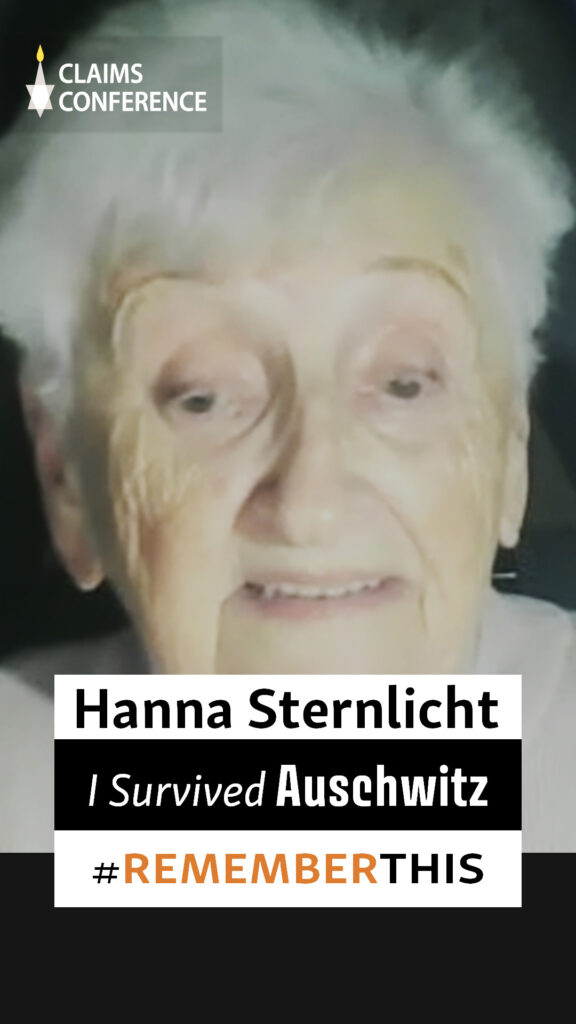
Add caption
#rememberthis
Before the war: Henry Ruston was born in 1929 in Lódz, Poland. He was 10 years old when the Nazis invaded Poland.
During the Holocaust: Henry was only 12 years old when he was forced to move to the Lódz ghetto. In August 1944, with the ghetto’s liquidation, he and his family were deported to Auschwitz. He and his parents survived the selection process. Henry remained with his father and uncle in the camp. They were then selected for labor and sent to the Gross-Rosen concentration camp.
He was liberated from the Wolfsberg concentration camp, a subcamp of Gross-Rosen, on May 8, 1945, at 16.
After the Holocaust: After liberation, Henry and his father reunited with his mother and lived in Germany. Henry received a high school-level education in Germany before immigrating to the United States. He became an electrical engineering and computer science professor at New York University’s School of Engineering. He is now retired and lives in Westchester.
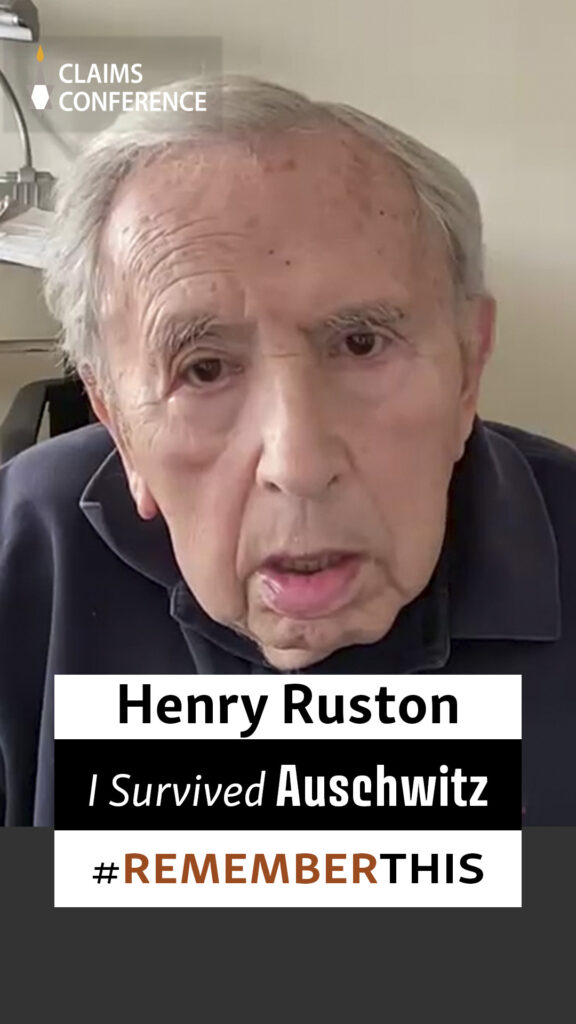
#rememberthis
Before the war: Henry Shery, né Hirsch Gunsher, was born in December 1929, in Łódź, Poland. He had one older brother and two sisters. He recalls Jewish life and culture in his hometown before the war in the Jewish section. He spoke Yiddish at home and learned Polish in school.
During the Holocaust: Once Poland was invaded, his street became part of the ghetto, and several families moved into his family home. His father became sick and passed away; a year later, his mother died as well. With the evacuation of the ghetto, Henry and his siblings were sent to Auschwitz. He and his brother were then transported to a labor camp in Hanover, Ahlem. His brother was murdered in Ahlem. He was liberated with his uncle by the American army on April 10, 1945.
After the Holocaust: After liberation, Henry found out about the death of the rest of his family. The British government permitted him to emigrate to Palestine as a youth at 17. He settled on a kibbutz and joined the navy, bringing people from DP camps into Palestine, though he eventually left for the U.S. in 1952. He married and settled in Lakewood, NJ. He has not been back to Poland since.
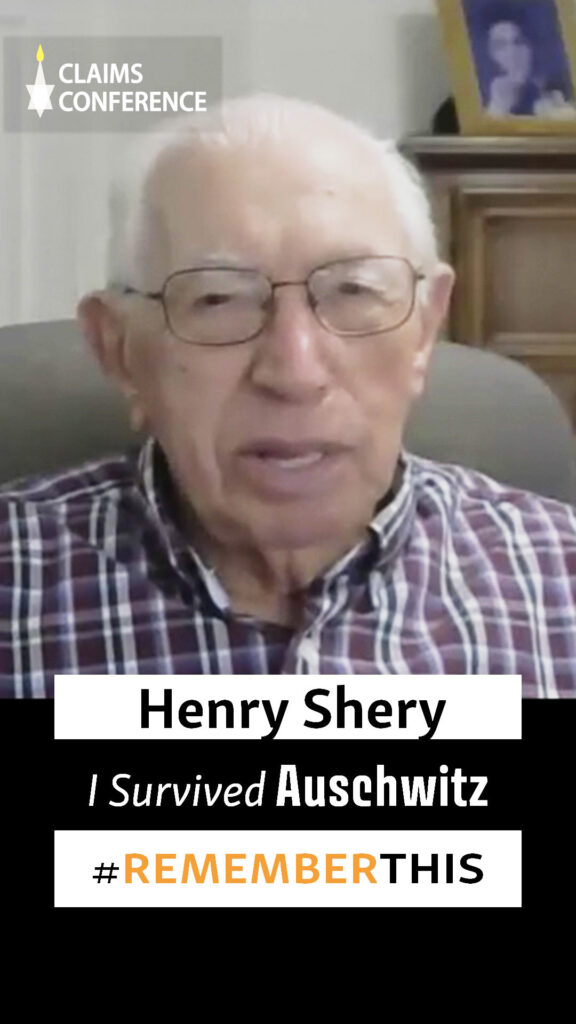
#rememberthis
Before the war: Herta Vyšná was born in 1930 in Nitra, Slovakia and lived there with her parents and one brother.
During the Holocaust: During a round-up, the family was taken to the Sered labor camp but later released. The family moved to Bratislava and were living in hiding. Residents reported them and they were deported again to Sered and later to Auschwitz. Herta’s mother was selected for medical experiments in Auschwitz and died of typhus in a subcamp of Auschwitz in Gliwice. Her father was deported further to Sachsenhausen where he died. Herta was sent on a death march and was liberated by partisans.
After the Holocaust: After liberation, she went to Bratislava in search of her relatives; only her brother survived. Herta moved to Bratislava, married and had two daughters.
#rememberthis
Before the war: Hirsz Litmanowicz was born in 1931 in Będzin, Poland. He is the youngest of his parent’s five children. His father passed away in 1933.
During the Holocaust: During the occupation, Hirsz and his family were sent to the ghetto in Będzin. Initially avoiding deportation by hiding under a bed, Hirsz was sent to Auschwitz in June 1943. Hirsz was selected along with eleven other boys by Dr. Mengele to be part of Hepatitis B experiments. After three months, he was deported to Sachsenhausen and later sent on a death march to Lübeck. He was liberated on May 4, 1945.
After the Holocaust: Hirsz lived in a Jewish orphanage in Miossac, France, for five years. He immigrated to Peru with an aunt in 1952. He is the only survivor of Auschwitz living in Peru. He has four children and six grandchildren.

Add caption
#rememberthis
Before the war: Irene Weiss, named Perl Ruchel Fogel, was born on November 21, 1930, in Bótrágy, Czechoslovakia. She was one of six siblings.
During the Holocaust: With the Nazi invasion of Czechoslovakia, Irene’s hometown was under Hungarian rule. In April 1944, the Jews living in Hungary were forced into the ghetto in Munkács. In May, Irene and her family were deported to Auschwitz. At selection, her mother and three siblings were murdered. In the camp, Irene, her sister, and her two aunts worked in Kanada, sorting through victims’ items. In January 1945, they were forced on a death march to Ravensbrück, later transported to Neustadt-Glewe. With the arrival of Soviet troops, Irene, her sister and one aunt left for Prague.
After the Holocaust: Eventually, with the help of family members and aid from Jewish organizations, the three immigrated to New York in 1947. Irene married in 1949 and moved to Virginia. She received a Bachelor’s in education and taught in public school for over a decade
Group portrait of the Fogel and Klarman families. Pictured in the front row are Iren Fogel, Zoltan Klarman, and Edit Fogel. Back row: Serena Fogel and Bella Klarman. Circa 1938-1941. —US Holocaust Memorial Museum, courtesy of Irene Fogel Weiss.
#rememberthis
Before the war: Ivor, born Yitzchak Perlmutter was born in 1932 in Mako, Hungary. He was raised in an Orthodox family with eight siblings.
During the Holocaust: Ivor and his family were forced into a ghetto. His father and eldest brother were sent to hard labor, never to be heard from again. Ivor was only 12 when he was deported to Auschwitz. When he arrived, he lied and said he was 16 and was selected for labor. With the arrival of the Red Army, Ivor and his eldest brother were sent to the Kaufering camp in Germany. In 1945, he was transported to Dachau and liberated.
After the Holocaust: After liberation, he and his older brother emigrated to England. Ivor met his wife at 18; they have four children.
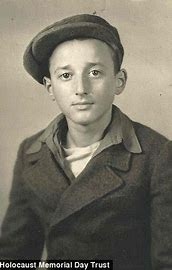
Ivor as a young boy before the Holocaust.
#rememberthis
Before the war: János Biksz was born in July 1929, in Karcag, Hungary. His family lived there for one year before moving to Békéscsaba.
During the Holocaust: He was in the Békéscsaba ghetto from April to June 1944 and was then deported with his family to Auschwitz. His mother, Ilona, died in the gas chambers and his father, Leopold, was deported to Dachau, where he was also murdered. He was liberated from Auschwitz on January 27, 1945.
After the Holocaust: After the liberation he made Alijah with his sister and was one of the founders of a kibbutz. Ten years later, he returned to Hungary, has a son and two grandchildren.
#rememberthis
Before the War: Jona Laks was nine years old when Nazi Germany invaded Poland in September 1939. She lived with her family in Łódź, where they were later forced into the Łódź ghetto. In 1942, her parents were deported to the Chelmno extermination camp.
During the Holocaust: In August 1944, Jona, her twin sister Miriam, and their older sister were sent to Auschwitz. Initially, Jona was directed toward the gas chambers, but when her older sister informed Josef Mengele that Jona was a twin, she and Miriam were sent to Mengele’s laboratory for twins’ experiments. Jona was tattooed with the number A27725, and Miriam received A27700.
Mengele subjected twins to cruel experiments, including organ removal without anesthesia. If one twin died, the other was often killed. On January 27, 1945, with the evacuation of Auschwitz, Jona and Miriam endured a death march to Ravensbrück and were later imprisoned in Malchow. They were liberated near Leipzig on May 8, 1945.
After the Holocaust: Jona and Miriam returned to Łódź but left for London following the 1946 Kielce pogrom. In 1948, Jona immigrated alone to Palestine, eventually settling in Tel Aviv, where she lived with her husband.
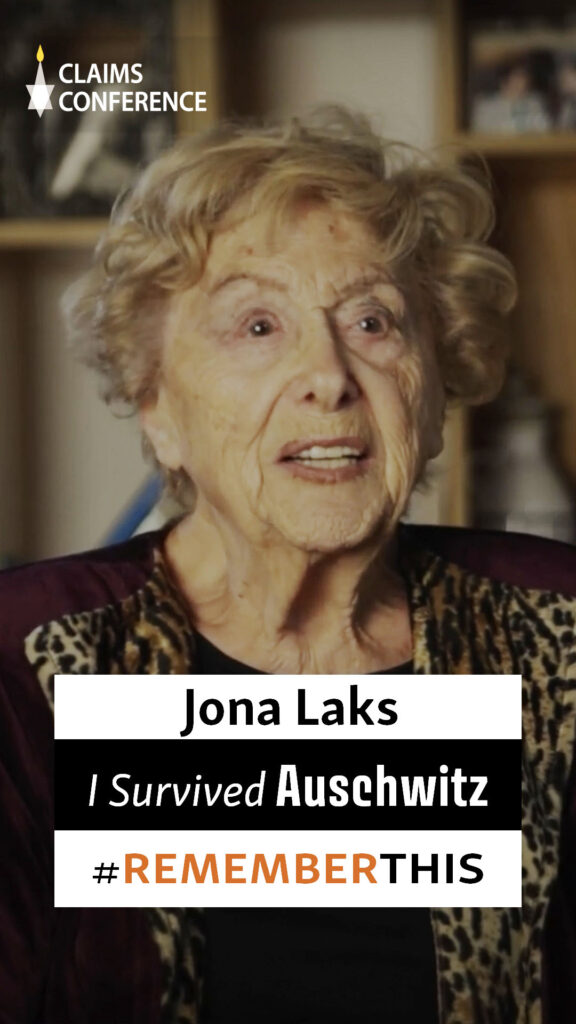
#rememberthis
Before the war: Éva Klein, later known as Jozséfné Mezei, was born in June of 1928, in Miskolc, Hungary. Her parents, Lajos Klein (born 1890) and Rozsa Grunfeld (born 1891), were a Jewish family living in Miskolc.
During the Holocaust: In June 1944, Éva and her family were deported from the Miskolc Ghetto to Auschwitz. Her parents were murdered in Auschwitz in 1944. Éva and her sister were later transferred to the Plaszow camp near Krakow and then returned to Auschwitz, where Éva was assigned the number A-21044.
At Auschwitz, Éva endured grueling forced labor, extreme cold, and starvation. She often hid in a cupboard, overwhelmed by despair, and felt as though there was no place on earth for her to go. From Auschwitz, she and her sister were transported to Markkleeberg near Leipzig, where they were forced to work in a Junkers aircraft factory.
After the war: Éva was liberated in March 1945 in Dalen.
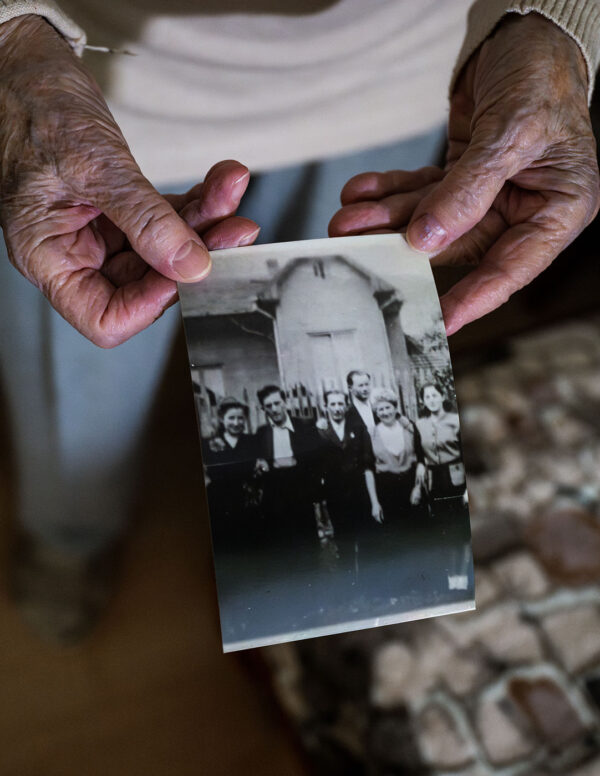
Eva (Joszefne) holds a picture of her family before the Holocaust.
#rememberthis
Before the war: Judith Elkàn-Hervé, née Molnar was born on March 15, 1926, in Oradea, Transylvania.
During the Holocaust: Judith graduated high school on May 1, 1944; a week later, she and her family, including her grandmother and aunt, were taken into the ghetto in their city. A few weeks later, at 18, she was sent to Auschwitz with her family. Before liberation, she and her mother were transferred to the Zittau concentration camp in Germany, where they were eventually liberated. She credits her mom for saving her life with her mere presence.
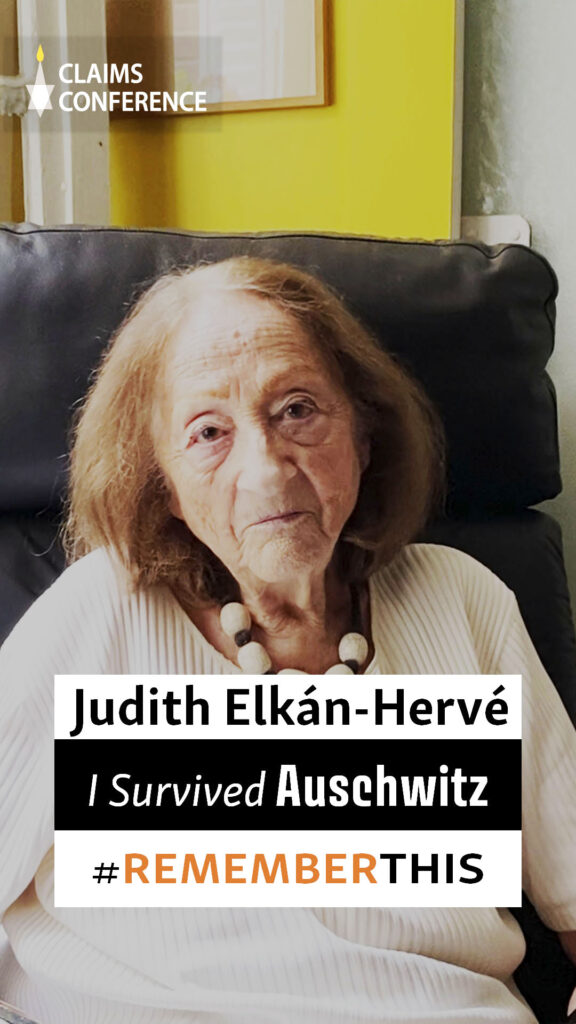
#rememberthis
Before the war: Judy Weissenberg Cohen was born in September 1928 in Debrecen, Hungary. She was the youngest child of seven siblings in a large Orthodox family.
During the Holocaust: At 15, she and her family were deported from the Debrecen ghetto to Auschwitz in May 1944. Judy’s parents were immediately murdered in the gas chambers, while she and her three older sisters were chosen to work. Following subsequent selections, her sisters were murdered, and she was deported to Bergen Belsen. Judy was then transported to another camp to work in an airplane factory near Leipzig, Germany. Following the US bombing of the factory, she was forced on a march with no destination, eventually met by the American Red Cross in May 1945.
After the Holocaust: After the war, Judy reunited with her sister and brother. She eventually moved to Canada in 1948, married and had two children.
#rememberthis
Before the war: Lea Novera, née Zajac, was born in December 1926, in Hajnówka, Poland. She had two siblings.
During the Holocaust: In 1942, Lea and her family were moved to the Pruzhany ghetto. The following year, they were deported to Auschwitz. Lea’s mother was immediately sent to the gas chamber and instructed to follow her aunt, who was chosen for labor. Her father and siblings were also murdered. During the evacuation of the camp, Lea and her aunt were sent on a death march to Ravensbrück and then to the Leipzig-Mansfeld concentration camp. They were liberated there in April 1945 by the Soviet army.
After the Holocaust: After the war, Lea immigrated to Argentina. She married a fellow Holocaust survivor, Marcos, and has two children.
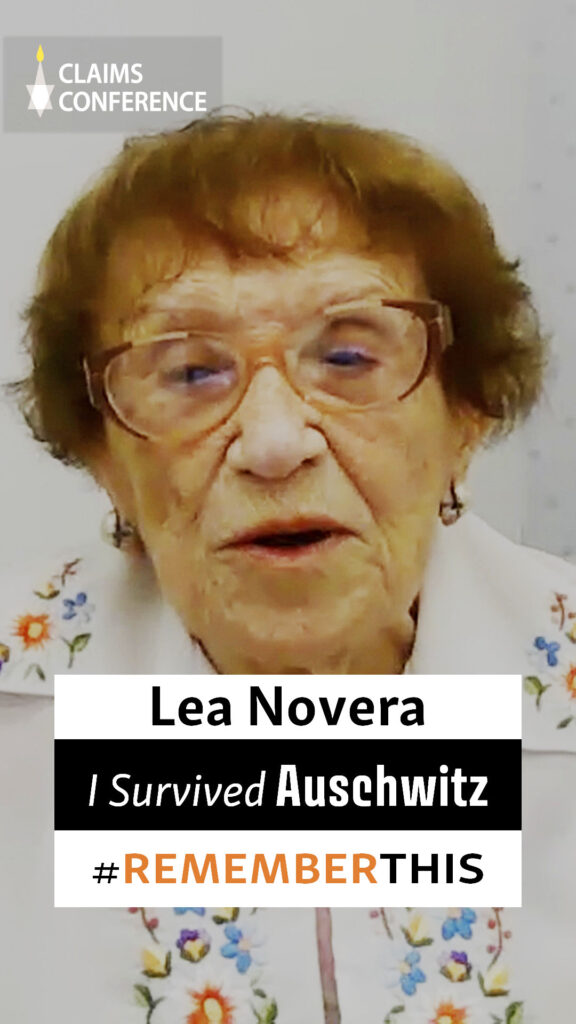
#rememberthis
Before the war: Leon Weintraub was born in January 1926, in Łódź, Poland, the first son of five children. His father died when he was one year old.
During the Holocaust: Leon was 13 years old when the Nazis ordered him and his family to move into the Litzmannstadt ghetto. He spent four and a half years in the ghetto until its liquidation at the end of August 1944; he, his mother and three sisters were deported to Auschwitz. His fourth sister was murdered when trying to avoid deportation. His mother was killed in the gas chambers of Auschwitz right upon their arrival. Leon managed to escape his death in Auschwitz when he spontaneously joined an outgoing transport of inmates to the concentration camp Gross-Rosen, where he was forced to work as an electrician. His youth block in Auschwitz was murdered in the gas chambers just a few days later.
In February 1944, Leon was transferred to Flossenbürg and Natzweiler-Struthof in March. With the French army approaching, he was deported once again, but the train got bombed by a warplane near Hintschingen. Leon escaped together with other inmates. After an all-night walk, the group reached Donaueschingen on April 23, 1945, two days after the French had occupied the city. Altogether, he was in captivity for 5 years, 7 months and three weeks.
After the Holocaust: At that point, his weight was down to 35 kilos, and he suffered from typhus. After his liberation, he found the three sisters who had been deported to Auschwitz. After the war, Leon studied medicine and became a gynecologist and obstetrician. Leon Weintraub lives in Stockholm. He has three sons, one daughter, ten grandchildren and nine great-grandchildren.
#rememberthis
Before the war: Lili Friedman was born in Łódź, Poland in 1938. A year later, the war broke out in Poland.
During the Holocaust: Lili and her family were moved into the Łódź ghetto and deported to Auschwitz once the ghetto was liquidated. As a toddler, Lili spent three days in Auschwitz. She and her mother were then sent to the Stutthof concentration camp, Dresden and finally on a death march to Theresienstadt. Her father died on the death march three days before they reached the camp. Soviet troops entered the camp on May 9, 1945.
After the Holocaust: After the war, Lili and her mother returned to Łódź, moved to France briefly, and settled in Canada. She married at 21 and was with her husband, Arnold, a fellow Holocaust survivor for 56 years.
↑top
All content ⒸConference on Jewish Material Claims Against Germany (Claims Conference)